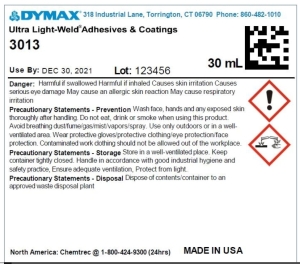Comprender la vida útil de los materiales curables con luz
La vida útil se define como el tiempo que un producto puede almacenarse sin que se vuelva inadecuado para su uso, consumo o venta. Entonces, ¿cómo se determina la vida útil y qué factores la afectan? En esta publicación del blog abordaremos las 5 preguntas más comunes sobre la vida útil para ayudar a evitar errores costosos.
¿Cómo se determina la vida útil de un producto?
La vida útil de un producto se determina mediante pruebas internas del producto. La determinación no se basa únicamente en la composición química en sí, sino también en el tamaño del envase en el que se encuentra el material. Un material puede reaccionar de forma diferente cuando se almacena en un balde de 15 litros que en una jeringa de 3 ml.
¿Dónde puedo encontrar la vida útil de un producto?
La vida útil de un producto casi siempre aparece en la hoja de datos del producto. Cada producto tiene una fecha de caducidad, que es la fecha en la que finaliza su vida útil. Por lo general, también se encuentra en la etiqueta del producto. Los distintos tamaños de envases del mismo producto pueden tener distintas vidas útiles, así que asegúrese de comprobarlo. La siguiente imagen muestra un ejemplo de una etiqueta adhesiva Dymax con una fecha de caducidad.
¿Qué sucede con un material más allá de su vida útil?
Un material que permanece sin usar en el envase original y que se ha almacenado en las condiciones recomendadas puede comenzar a experimentar efectos negativos más allá de la vida útil indicada. Los efectos pueden ser casi inmediatos o ser parte de una disminución lenta del rendimiento. Los efectos pueden incluir algunos o todos los siguientes: tiempos de curado más prolongados, falta de curado, gelificación en el envase, cambios en la viscosidad, sinéresis/separación y disminución del rendimiento. Asegúrese de comunicarse con el fabricante para responder cualquier pregunta que pueda tener.
¿Pueden las condiciones de almacenamiento afectar la vida útil?
Por supuesto. La temperatura, por ejemplo, es un elemento muy importante al que hay que prestar atención. Si un producto se almacena a una temperatura superior a la ideal, su estabilidad y eficacia corren peligro. Del mismo modo, si las condiciones de almacenamiento son más frías que las indicadas por el fabricante, la posible congelación/descongelación provocará la separación de los materiales y la calidad del producto podría verse comprometida.
¿Se puede utilizar el material después de la fecha de caducidad?
Sí y no. Si el usuario desea continuar utilizando el producto una vez que haya expirado su vida útil, la mayoría de los fabricantes recomiendan encarecidamente que repita las mismas pruebas de validación que se realizaron cuando el material se calificó por primera vez para la aplicación. Las pruebas de materiales curables con luz, por ejemplo, generalmente consisten en la velocidad de curado, la profundidad de curado y pruebas destructivas para monitorear la resistencia de la unión. Es responsabilidad del usuario del material determinar qué criterios de prueba se deben aplicar y si los resultados aún cumplen con los requisitos de diseño del producto.

